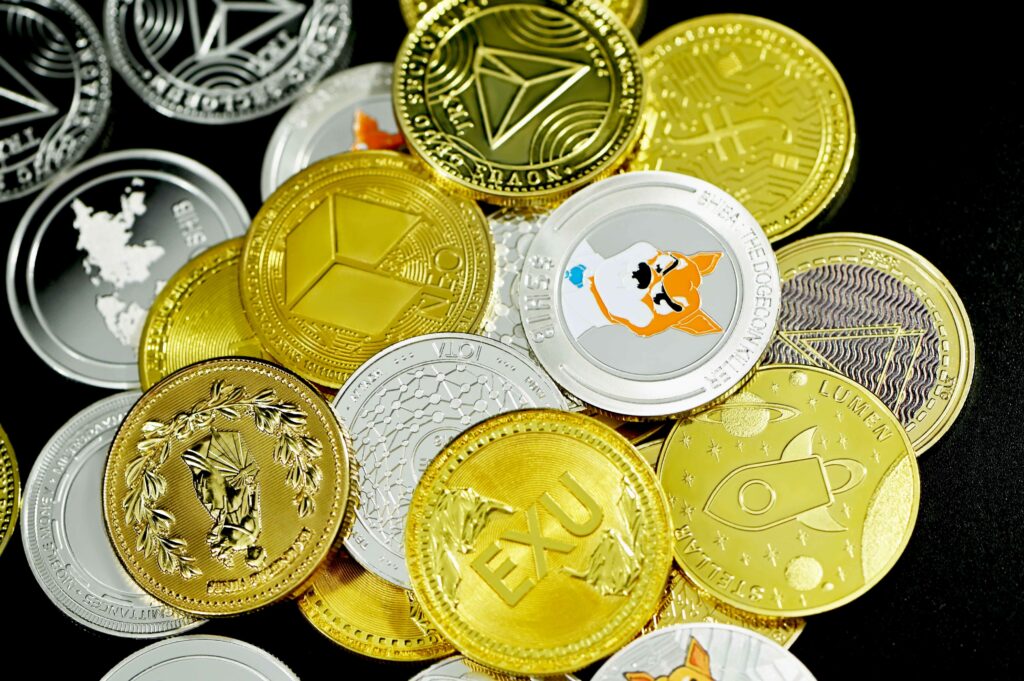
31.10.2023
How do ICOs and STOs work in corporate finance?
Financing through ICOs and STOs is a way of raising capital using blockchain technology.
ICOs (Initial Coin Offerings) and STOs (Security Token Offerings) are two methods that allow companies to raise investment from a broad investor base.
While ICOs typically involve tokens that represent utility or access to services in a project, STOs offer tokens that represent financial securities and are often subject to securities regulations.
 Por
Sanz González , María
Por
Sanz González , María 1.- Introduction to ICOs and STOs:
Explanation of what ICOs and STOs are and their fundamental differences.
ICOs (Initial Coin Offerings) and STOs (Security Token Offerings) are two methods of raising capital in the world of cryptocurrencies and blockchain technology. ICOs allow companies to raise investment by issuing tokens that represent utility or access to services in a project. On the other hand, STOs offer tokens that represent financial securities and are often subject to securities regulations. The fundamental difference lies in the nature of the tokens issued. While ICOs are less regulated and tend to be used to fund early-stage projects, STOs are backed by real assets and adhere to stricter regulations. STOs offer investors greater security and ownership rights, as the tokens have intrinsic value backed by assets, whereas ICOs often depend on the success of the underlying project for their tokens to have value. The choice between ICOs and STOs depends on the funding objectives and the desired level of regulation.
2.- Process of an ICO:
Description of the process of launching an ICO, which involves the creation of a new token and the sale of those tokens to interested investors.
The process of launching an ICO (Initial Coin Offering) involves several key stages:
- Project conceptualisation: Before launching an ICO, the startup or project must have a clear and solid idea that justifies the creation of a new token. This involves defining the purpose of the token and how it will be used in the project ecosystem.
- Token creation: A new token must be developed to represent utility, access or participation in the project. Most ICOs are based on the Ethereum blockchain and use token standards such as ERC-20.
- Planning and Documentation: A whitepaper is created describing the project, the technology behind the token, its use, the team, the roadmap and other relevant details. In addition, the terms of the ICO are set out, including the amount of tokens to be sold, the duration of the ICO and the price per token.
- Promotion and Marketing: The ICO is promoted to attract interested investors. This may involve online marketing campaigns, public relations, social media ads and the creation of a dedicated website for the ICO.
- Launch and Sale: The ICO is launched on a specific date. During the ICO period, investors can buy tokens using cryptocurrencies such as Bitcoin or Ethereum. The funds raised are used to finance the project.
- Listing on Exchanges: After the ICO, projects often seek listing of their token on cryptocurrency exchanges to enable trading on the secondary market.
What is an Exchange?
Exchanges are platforms, usually virtual, where cryptocurrency exchanges take place. They are therefore also known as cryptocurrency “exchanges”.
7. Development and Implementation: The team behind the project works on the development and implementation of your product or platform, according to the roadmap set out in the whitepaper.
8. Community Maintenance: It is essential to maintain an active and engaged community around the project, providing updates and constant communication with investors.
It is important to note that ICOs have been subject to increasing regulation in several countries, and it is critical to comply with applicable laws and ensure transparency and security for investors. In addition, projects must demonstrate real value and a strong use case for their tokens in order to attract investors interested in their vision and long-term success.
3.- Process of an STO:
Detail of the process of an STO, which involves the issuance of security tokens backed by real assets and the sale of these tokens to investors seeking a stake in the company or project.
What is a Security Token?
A Security Token is a type of cryptographic token that represents a traditional financial security, such as a stock, bond or loan. Security tokens are based on blockchain technology, which provides security and transparency.
Milestones in the STO Process
- Asset Selection and Tokenisation: The company or project determines the assets that will back the security tokens, such as real estate, stocks, bonds or other financial assets. These assets are then tokenised, which involves representing their ownership in the form of tokens on a blockchain.
- Regulation and Compliance: STOs are subject to securities regulations in most jurisdictions. The company must comply with applicable securities laws, which may include filing documents and records with regulatory authorities.
- Preparation of Documentation: A set of legal and regulatory documents is created, which may include a prospectus, investment agreement and other related documents. These documents describe the terms of the STO, the rights of investors and details about the backed assets.
- Private or Public Offering: The STO may be conducted as a private offering, targeted at accredited investors, or as a public offering, open to a broad investor base. Regulations and requirements vary depending on the type of offering.
- STO platform: An STO platform is selected to facilitate the issuance and sale of security tokens. These platforms typically conduct due diligence procedures to verify investors and ensure regulatory compliance.
- Token sales: Security tokens are offered to interested investors via the STO platform. Investors purchase tokens in exchange for cryptocurrencies or other accepted assets.
- Registration and Custody: Records of ownership of security tokens are stored on the blockchain, and custody of backed assets can be managed through trusted third parties or specialised custodians.
- Secondary Market Trading: After the STO, investors can trade the security tokens on secondary markets that comply with applicable securities regulations.
- Ongoing Reporting and Compliance: The issuer must comply with ongoing securities regulations, which may include financial reporting and other compliance requirements.
STOs offer investors greater security and ownership rights compared to ICOs, as the tokens are backed by real assets. However, the STO process involves a higher level of compliance and regulation to ensure investor protection and regulatory compliance.
4.- Advantages and Challenges:
It is useful to start this point by listing the advantages of financing through ICOs and STOs, such as global accessibility, and the challenges, such as the lack of regulatory protection.
A) Advantages of financing through ICOs and STOs:
- Global Accessibility: Both ICOs and STOs allow projects and companies to access a global investor base, eliminating geographical barriers.
- Decentralisation: These funding methods allow companies to raise funds directly from the community, without financial intermediaries, which can reduce costs and complexities.
- Increased Liquidity: Tokens issued in ICOs and STOs can often be traded on secondary markets, giving investors the possibility to sell their holdings before the project is completed.
- Asset Diversification: STOs allow investors to purchase tokens backed by real assets, providing greater portfolio diversification and the ability to own a stake in traditional assets.
- Efficiency and Speed: Blockchain technology enables efficient issuance and distribution of tokens, speeding up the funding process compared to traditional methods.
B) Challenges of financing through ICOs and STOs:
- Lack of Clear Regulation: ICOs often operate in an uncertain regulatory environment, which can lead to legal problems and risks for investors.
- Fraud Risk: Lack of regulation can attract fraudsters and fraudulent projects that seek to raise funds without legitimate intentions.
- Price Volatility: Tokens issued in ICOs can experience high price volatility, which can result in losses for investors.
- Project Reputation: The success of an ICO or STO often depends on the reputation of the team and the project, which can be a challenge for new players in the space.
- Due diligence requirements: Investors must conduct extensive due diligence to assess the quality and legitimacy of a project, which can be complicated and requires specialised expertise.
- Compliance Requirements: STOs are subject to securities regulations, which implies a higher compliance burden and legal requirements to be met.
In summary, financing through ICOs and STOs offers advantages in terms of accessibility and efficiency, but also presents significant challenges, such as the lack of regulation and the risk associated with volatility and misconduct. The choice between the two methods should carefully consider the objectives and desired level of compliance by the issuing company and investors.
5.- Examples of Success and Failure:
Highlight examples of projects that have been successful in raising funds through ICOs and STOs, as well as cases of failure or fraud that have plagued the space.
A) Examples of Successful ICOs:
- Ethereum (ICO in 2014): Ethereum, the second largest cryptocurrency by market capitalisation, raised around $18 million in its ICO in 2014. The platform has been instrumental in the development of smart contracts and decentralised applications.
- EOS (ICO in 2017): EOS raised over $4 billion in its ICO in 2017. The EOS.IO platform has been used to create numerous DApps and projects in the blockchain ecosystem.
- Binance Coin (BNB): Binance, one of the world’s largest cryptocurrency exchanges, launched its ICO in 2017 and raised around $15 million. The BNB token is used in the Binance ecosystem and has experienced significant growth.
B) Examples of Successful STOs:
- tZERO (STO in 2018): tZERO is a digital asset trading platform that raised around $134 million in its STO. The platform focuses on security tokens backed by traditional assets.
- Blockchain Capital (STO in 2017): Blockchain Capital is a blockchain-focused venture capital fund that conducted an STO in 2017. The STO allowed investors to acquire tokens backed by real assets in the world of cryptocurrencies and blockchain.
C) Cases of Failure and Fraud in ICOs:
- BitConnect: BitConnect was a project that promised significant returns to investors in exchange for loans and holding their token. However, it was labelled as a Ponzi scheme and eventually collapsed in 2018.
- Centra Tech: Centra Tech raised more than USD 25 million in its ICO, promoting a debit card backed by cryptocurrencies. Its founders were accused of fraud and faced legal action in 2018.
- Pincoin and iFan project: These ICO projects in Vietnam raised around USD 660 million before disappearing. The promoters were accused of fraud.
These examples illustrate both the potential for success and the significant risks associated with ICOs and STOs. Investors should conduct thorough due diligence before participating in any offering and ensure that the project complies with regulations and is backed by a legitimate team.
6.- The Future of Blockchain Finance:
Discussion on how funding through ICOs and STOs may evolve in the future and their role in the blockchain and investment ecosystem.
Funding through ICOs and STOs is a fundamental component of the blockchain ecosystem and will continue to evolve in the future, playing an important role in the investment world. Here are some ways in which these forms of financing may evolve:
- Increased Regulation: Regulation around ICOs and STOs is likely to continue to evolve and strengthen. This will provide a greater degree of protection for investors and increase the legitimacy of offerings.
- Increased professionalisation: As the ICO and STO space matures, greater professionalisation is expected in the issuance, promotion and conduct of these offerings. Projects will have to meet higher standards.
- Asset Diversification: A wide range of assets can be tokenised, including real estate, traditional company shares, works of art and more. This will allow investors to access greater asset diversification.
- Increased Access to Minority Investors: ICOs and STOs will continue to enable minority investors to participate in investment opportunities that were previously reserved for accredited or institutional investors.
- Increased Transparency and Security: Emerging technologies, such as smart contracts and traceability on the blockchain, will improve transparency and security in these offerings.
- Infrastructure Development: The infrastructure supporting ICOs and STOs will continue to improve, with the development of more advanced platforms, custody services and compliance solutions.
- Greater Integration with Traditional Markets: We are likely to see greater integration between traditional securities markets and security tokens, allowing for greater liquidity and adoption.
- Innovation in Tokenisation Models: Projects will continue to explore creative ways to tokenise assets and offer new investment models.
- Increased Education and Awareness: Education about ICOs and STOs will expand, allowing more investors to understand the opportunities and associated risks.
In short, ICOs and STOs will continue to be an integral part of the blockchain ecosystem and will play an important role in the evolution of investments. As challenges are resolved and higher standards are set, these forms of financing are likely to become more secure and accessible to a wider audience of investors.
If you enjoyed this article, you may also find it interesting to read the following one:
Startups, Tokens and Blockchain
Contacto No te quedes con la duda, contacta con nosotros. Estaremos encantados de atenderte y ofrecerte soluciones.











